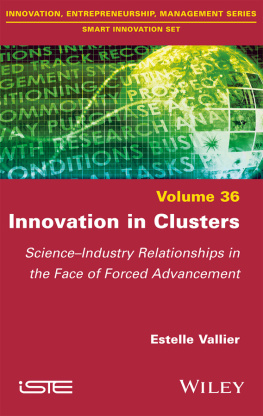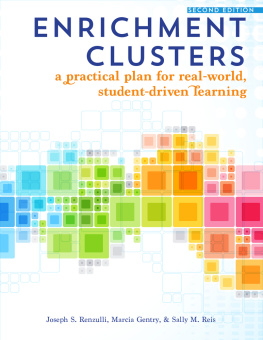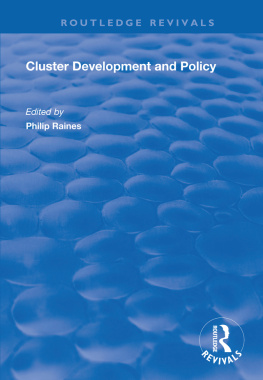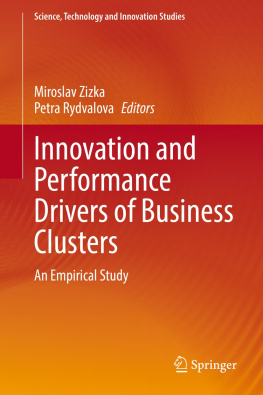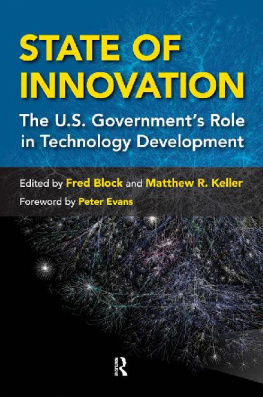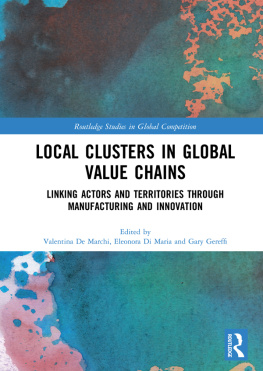First published 2021 in Great Britain and the United States by ISTE Ltd and John Wiley & Sons, Inc.
Apart from any fair dealing for the purposes of research or private study, or criticism or review, as permitted under the Copyright, Designs and Patents Act 1988, this publication may only be reproduced, stored or transmitted, in any form or by any means, with the prior permission in writing of the publishers, or in the case of reprographic reproduction in accordance with the terms and licenses issued by the CLA. Enquiries concerning reproduction outside these terms should be sent to the publishers at the undermentioned address:
John Wiley & Sons, Inc.
111 River Street
Hoboken, NJ 07030
USA
www.wiley.com
The rights of Estelle Vallier to be identified as the author of this work have been asserted by her in accordance with the Copyright, Designs and Patents Act 1988.
Foreword
It is a peculiarity of these pandemic times, but the word cluster has certainly never been in such widespread use as it is today, from epidemiological science to the most common conversations, describing the development of a virus called Covid-19. However, in other times and places, and with regard to other fields of human activity, this fetish word has been used to saturation point, even if today, in certain situations, it gives way to a more trendy word: ecosystem. We may as well admit that the more than extensive meaning of this term is quite appropriate, given the various projects commissioned by any number of organizations or specific groups. This is particularly the case in those localized instances where science, industry and public authorities are, in certain fields of technosciences, attempting to work together, as much by smart invocation as by physical methods of communication. Their ambition, resolutely symbolized and displayed on their letterheads or websites, is to attract, fertilize and develop innovation aimed at certain fields of science, which, ultimately in the form of goods, will be commercialized with the help of devices, procedures, advice and financial resources.
This is indeed the purpose of this rich and fascinating book by Estelle Vallier, structured in two parts and six chapters. Its title clearly invites us to explore the lineaments of this type of three-way collaboration dedicated to the production of innovations, to study its various mechanisms and movements, to understand its concrete pathways, to consider the institutional and economic goals it demands and, finally, to identify the obstacles that arise in practice for the parties involved in order to better understand them. In short, to shed new light on the processes at work which, to begin with, we would summarize under the title Technoscience Clusterization.
Certainly, some may argue that a vast literature already exists on this subject and that there is no need to attempt to further understand what has already been understood and, to a certain extent, the first two chapters of this book could bear witness to this. However, far from the sometimes condescending repetitions and unstimulating writing conventions, on the contrary, an astute state of the art is presented to the reader. Articulated through both historical and international perspectives, it offers from the outset a point of view and, consequently, an intelligibility so that this global phenomenon of technoscience clusterization can be understood, which, nevertheless, because it cannot be grasped on an international scale, is rooted in national and local institutional and organizational logic. It therefore enables soothing discourse to be avoided and, in contrast, an understanding, on the one hand, of how this accumulated knowledge, particularly in management sciences, has been able to accompany and justify its general design, from which some miracle had been expected, and, on the other hand, its concrete and localized implementation by ad hoc public policies. It is clear that the approach chosen by Estelle Vallier is congruent with the deployment of her research; for, rather than aiming to celebrate once again the success of this three-way marriage, her ambition was to renew questioning by seeking to interpret the difficulties that the actors in this complex relationship face in practice in order to collaborate. This is indeed the central issue that is anticipated from institutionalized scienceindustry relationships looking to produce any desired innovation.
This was the starting point of this research, described in the Introduction, for it was necessary for a cluster pilot study to question its own role, to succeed by depending somewhat on an ambient imagination (an ideology?), made to measure like any readymade garment, before being able to call upon the critical and interested gaze of social science. This book is specifically the end result of such sociological research, certainly commissioned, as well as negotiated. This research is rooted in Frances best-known biocluster, which possesses the legitimacy that comes from its 20 years of existence: Genopole, based in Evry, in the south of Paris. In practice, the research posture of active participation in cluster coordination, while at the same time succeeding in maintaining a distance from it, could be more than embarrassing, given the risk of not being able to keep the two together over the long-term. Methodologically, this dual position has, in the end, enabled this collective role, the initial aim of which was the steering of the cluster, but entirely diverted towards the success of the relationship between science and industry, to be explored in context.
Therefore, we can say without further ado that the challenge has succeeded. This result, through the detailed analysis developed throughout the chapters of the second part of this book, leads the reader to explore the different levels of intermediation through which any institutionalized cluster pilot operates. As a result, the different problems and obstacles that resolutely stand in the way of the imagined and imaginary road of the uninterrupted flow of innovations from science to industry, in which it continues to believe, are revealed. Throughout the chapters, the reader will be aware of this need for creativeness on the part of the clusters operational teams, in order to keep the flame of successive attempts to establish links alive. The picture that emerges is similar to the reproduction of the legend of Sisyphus. This is evidenced by the many meeting mechanisms, tools and instruments of all kinds, all of which are aimed equally and simultaneously at academic laboratories and enterprises (mainly start-ups) that have been labeled, rather than those that are in the process of being labeled. Moreover, but no less important, lies a paradox specific to this instituted and organized process; for if the stated aim, the cluster effect, is to generate innovations from this networking, without this aim being able to be truly achieved to its desired extent, what hinders or even prevents it, without knowing how to precisely identify its contours, obliges the intermediary to demonstrate innovation himself in order to succeed in finding the right passage. However, it is one thing to note a certain impasse in this path and quite another to explain it. Perhaps at this nodal point, armed with the analysis, we see the specific and advantageous contribution of social science, singularly of sociology.

